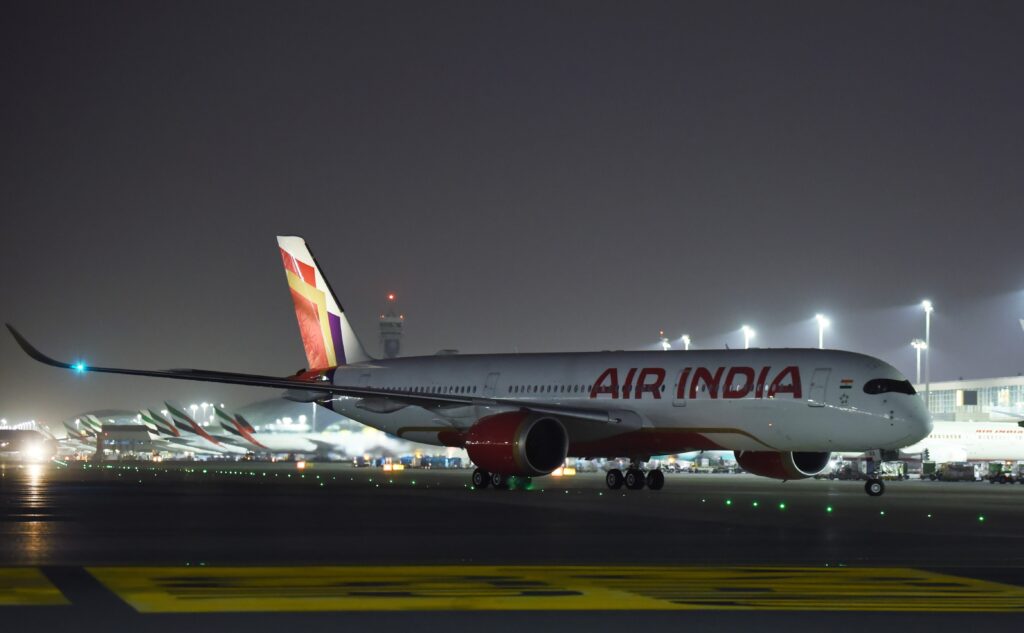Skift Take
By bringing its new flagship plane to Dubai, Air India is making a statement of intent about its global ambitions.
Air India’s new flagship has made its debut on the international stage. On Wednesday night, Flight AI995 departed Delhi for Dubai, operated by an Airbus A350-900 for the first time.
Until this week, the new widebody plane had been flying domestically, linking key Indian cities including Chennai and Hyderabad.
Air India’s decision to place the A350 on the Delhi to Dubai route before any other is notable.
The UAE city is one of the largest transit hubs anywhere on the planet. Emirates, its hometown airline, is the world’s biggest international carrier, with almost a million passengers flying through Dubai each week.
Data from Cirium Diio shows Emirates alone provides tens of thousands of seats a week to and from India.
Along with other mega-airports in the region such as Doha (home to Qatar Airways) and Abu Dhabi (home to Etihad), the Gulf serves as a critical location for global connections. The revitalized Air India wants a much bigger slice of this lucrative segment.
The national airline is in the middle of a five-year transformation plan that promises to bring Air India back to its world-class glory. One of the key metrics for success is removing the need for so many Indian passengers to transit through the Middle East.

The Significance of Dubai
By bringing the A350 to Emirates’ home and hub, Air India is making a statement of intent. The airline wants to fly more people directly to India, as well as being a notable onward transit location in its own right.
Speaking at the Skift India Summit in March, Air India’s CEO Campbell Wilson, identified what he believes to be the carrier’s competitive advantage over ‘one-stop’ regional rivals.
“It’s no wonder that some relatively small geographies or population bases want to tap larger, faster growing ones to augment what they don’t have themselves. Upwards of 70% to 90% of people are not going to that place, they’re going through that place,” he said.
Wilson told Skift that India will become less reliant on overseas carriers, thanks to a revitalized national airline: “Those passengers can be served by an Indian carrier or indeed a carrier from the ultimate destination market. And I think given the state of Indian airlines, and the fact that they’re very nascent and newly privatized and the market is developing professional modality, I think it’s appropriate for India that time be accorded for the maturity to come, for the growth to come, for the 470 aircraft that we’ve purchased to come, and for us to connect India non-stop to many places around the world, so people have a much faster, much more convenient, much less emissive way to get from A to B.”
A Friendly Rivalry?
Sir Tim Clark, the president of Emirates Airline has previously rebuffed the competitive threat posed by the ‘new’ Air India. “I have never looked at Air India as a foe or threatened by it. I do not consider them as a threat now,” he said in comments to the Mint Indian newspaper.
Sir Tim suggested that the two airlines could in fact be complementary, with potential synergies for both parties: “Rather than considering Emirates as a threat to India, look at us as someone who is going to help Air India in doing all things it needs to do.”
Why Has Air India Been Flying the A350 Domestically?
It is common for airlines to introduce a new plane type on a ‘soft launch’ basis. This typically includes flying shorter, domestic routes to bolster crew familiarization. It also offers the company a chance to iron out any teething issues before the plane flies more complex long-haul services.
Wilson told Skift that Air India is currently taking delivery of a new aircraft every six days – a rate he described as almost without precedent. While the bulk of these are smaller narrowbody planes, larger long-haul aircraft such as the A350 are also part of the mix.
Considered by Air India as its new flagship, the A350 has a three-class cabin configuration with 316 seats. This includes 28 business class suites with full-flat beds, 24 premium economy seats and 264 economy options. Skift was onboard the A350 in January for a sneak peek – read our verdict here.
Up to 40 of the European-built planes are on their way to Air India, with 20 of the current -900 variant, and 20 of the larger -1000 type.
The airline currently operates a total of 72 flights a week to Dubai from five Indian cities, of which 32 are from Delhi. Flights AI995/6 were previously served by the carrier’s Boeing 787-8 Dreamliner.

